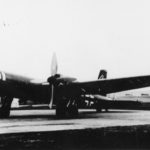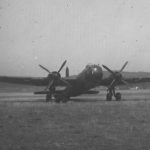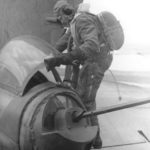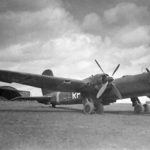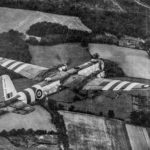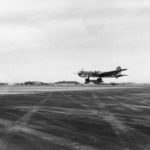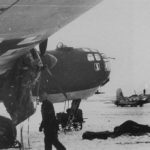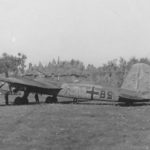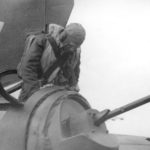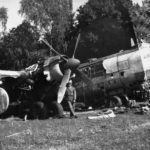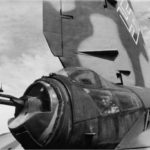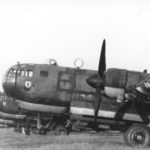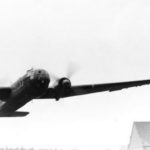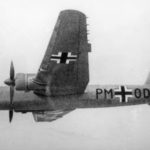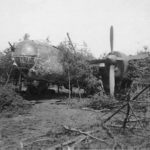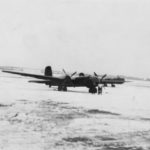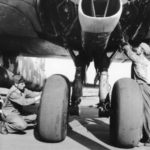He 177A-3 NF-GB of the Flugzeugführerschule (B) 16 at Burg
He 177A-5 of the 4/KG 40
He 177A-5 Greif of the 4/KG 40 2
Prototype He 177V-2 CB-RQ
He 177 frontal view
Bomber He 177A-5 Greif
He 177A-5 Greif of the 4/KG 40 Bordeaux-Merignac
He 177 of the IV/KG 1 Summer 1944
He 177 of the KG 100 with Aufsatzkran
Pilot inside the cockpit of a He 177 Greif
Rear gunner climbs into the tail turret of a He 177 Greif
He 177A-1 W.Nr 15266 VF-RP Bourges 1944
He 177 A-5 of the II/KG 40 undercarriage 3
He 177 6N-UK of the 2/KG 100
Captured He 177A-5/R6 TS439 (550062) on test flight in England 1944
He 177 Brandis 1944
Captured He 177 TS439 ex F8-AP of the II./KG40
Heinkel He 177 A-5 of the II/KG 40 undercarriage
Heinkel He 177 Lechfeld 1945/1946 2
He 177 landing
Heinkel He 177 in flight
He 177A-5 V4-CP of the 6/KG 1 in flight Summer 1944
Heinkel He 177A-02 DL-AQ
He 177V-12 GI-BL with a pair of 30 mm MK 101 cannons
He 177A-3 6N-SK of the KG 100
Captured Heinkel He 177A-5 550256 France
Abandoned Heinkel He 177 France 25 November 1944
Heinkel He 177A-3 V4-AK of the KG 1 at Brandis
He 177A-5 of the I/FKG 50 Zaporoze
He 177A-5 TM-IU 550229 with Schleppgerat
He 177 coded F8+BS of the 8/KG 40
He177 4
He 177 of the 5/KG 100
He 177A-5 87
He 177V-12 GI-BL gondola with 30 mm MK 101 cannons
He 177 rear gunner
He 177A-1 coded VF-RP of the KG 1 Bourges 44 2
Wreck of He 177 1945
He 177 E8-G? of KG 50
He 177 tail gunner
Abandoned He 177 Gebielstadt Germany 16 May 1945
He 177A-0 code E8-HK of 2/FKG 50
He 177 from Flugzeugführerschule (FFS) C 16
He 177A-3 of I/KG 100
He 177 35
He 177A-3 2143 VD-XS Flugzeugführerschule (FFS) C 16, Burg
He 177 1944
He 177A-3 of the I/KG 100 2
He 177A-5 550060 of II/KG 40
He 177V-5 PM-OD in flight
He 177 of the Flugzeugführerschule (FFS) C 16, Burg 1944
Captured He 177A-5 550050 France
He 177A-1
He 177 of KG 1 in Konigsberg-Devau December 1943
He 177A-5 of the II/KG 40 undercarriage
He 177 Lechfeld 1945/1946
He 177 was a 4-engined long-range World War 2 bomber of the Luftwaffe. The troubled aircraft was the only heavy bomber built in large numbers by Germany during the war.
Aircrews nicknamed it the Reichsfeuerzeug (lighter of the Reich) due the engines’ tendency to catch fire in early versions of the type. An unusual feature of the airplane were the twin-engines in each nacelle that drove a single propeller. The twin-engines had first been introduced on the Heinkel He 119 to reduce drag where they worked trouble-free, but their tight installation in the He 177 led to considerable problems. Starting with He 177A-3 a modified engine nacelle with a new engine (DB610, each containing two DB605) was used to eliminate this tendency.
Beset by many other technical diffculties in development and service, the plane had a troubled life. This was in part due to overly optimistic design requirements which in addition to long-range, high-speed, and carry a large bomb-load, was to be capable of dive bombing. Though Goering forbade Heinkel to develop a four engine version, Heinkel did anyways, leading to the development of the Heinkel He 274 and the Heinkel He 277 which had separate engines in the more commonly seen fashion.
The use of the He 177 was ended by the Fighter Emergency Program (Jägernotprogramm) which cancelled bomber production and operations and gave priority to defensive fighters in the final stages of the war.



